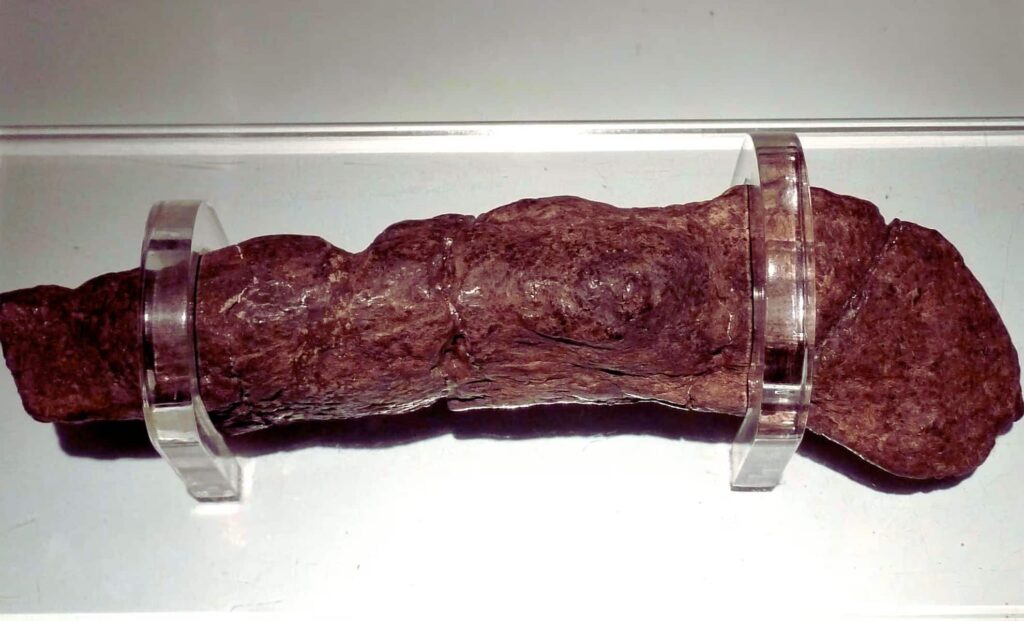In 1972, archaeologists digging beneath the future site of a Lloyds Bank branch in York, England, made an unexpected and remarkable discovery. What they unearthed wasn’t just another artifact or piece of history—it was something far more unique: a fossilized human excrement from the Viking era. This discovery, which has since captivated archaeologists, sheds light on life in the 9th century and continues to offer invaluable insights into the past.
An Unlikely Treasure: The Coprolite of York
The fossilized excrement, measuring approximately 20 cm in length and 5 cm in width, was found during excavations conducted by the York Archaeological Trust. Dating back over a thousand years, the coprolite is believed to belong to a Viking who lived in the bustling city of Jórvík, present-day York. At the time, Jórvík was a key commercial hub in the Kingdom of York, making it a melting pot of various Viking activities and cultural exchanges.
This excrement, preserved in York’s rich, damp soil, has been dubbed the “Lloyds Bank turd.” Its preservation was made possible due to the unique anaerobic conditions beneath the ground, which prevented the material from decaying. The fact that it has survived for over a millennium without losing its structure and texture is nothing short of extraordinary.
Diet Secrets Revealed in Ancient Waste
The analysis of this ancient coprolite has provided archaeologists with a rare look into the dietary habits of the Vikings. Experts have found that the excrement contains significant amounts of undigested fiber, especially from bran, indicating a diet rich in whole grains. Traces of animal protein, such as meat, have also been identified, showing that this Viking’s diet was largely carnivorous.

However, what is striking is the absence of fruits and vegetables. This suggests that the individual’s diet might have been imbalanced, relying heavily on what was available in their environment. Despite being nourishing, the Viking diet likely had its shortcomings, leaving people vulnerable to health issues due to poor nutrition.
Parasites
Perhaps one of the most compelling aspects of the coprolite is what it reveals about the health conditions of the time. Within the fossilized excrement, researchers discovered the eggs of parasitic worms, including Trichuris trichiura (whipworms) and Ascaris lumbricoides (roundworms). These parasites were common in ancient populations, and their presence highlights the poor sanitation and hygiene practices that prevailed in the Viking age.
These parasitic infestations were not merely a nuisance; they contributed to a range of health problems. Infected individuals would have experienced abdominal pain, malnutrition, and, in severe cases, developmental issues, particularly in children. The sheer number of worms found in this coprolite suggests that the person who produced it might have suffered from chronic digestive problems and poor health.
The Archaeological Significance of a “Crown Jewel”
While it may seem unusual to regard excrement as a valuable artifact, the coprolite found in York is considered one of the most important and precious archaeological discoveries of its kind. Dr. Andrew ‘Bone’ Jones, a leading paleoscatologist, described the coprolite as being “as precious as the crown jewels.” This is not an exaggeration; in fact, Jones has estimated its value to be around $39,000, making it one of the most expensive fossilized excrements ever recorded.
The coprolite’s value lies not only in its rarity but also in the wealth of information it provides about Viking life. It offers a unique perspective on the health, diet, and even the social conditions of the time. Today, it is housed in the JORVIK Viking Centre, where it continues to captivate visitors and scholars alike, serving as a window into a world long past.

